Test First Practices for Quality Software
Explains how adopting test-first practices in software development improves quality, reduces bugs, and enables confident continuous delivery by …
Promoting high standards in software craftsmanship and development practices.


Engineering excellence is the foundation of high-quality, maintainable, and scalable software systems. It is about fostering a culture that values continuous improvement, technical rigor, and long-term sustainability in software development. This category is dedicated to discussions on how organisations can elevate their engineering standards to deliver predictable, resilient, and valuable software.
Explains how adopting test-first practices in software development improves quality, reduces bugs, and enables confident continuous delivery by …
Explains how feature flags enable safe, incremental software releases, support continuous delivery, and use user feedback to improve features before …
Explores how automation boosts software development by reducing errors, speeding up deployments, and ensuring consistent, high-quality releases in …
Explores how automation in software development reduces human error, improves reliability, and streamlines workflows, using real-world examples and …
Explains how to set up and use Standard Environments in Visual Studio 2012 TFS for automated software deployment and testing, enabling consistent, …
Explains the role of automated testing in modern software development, covering types, integration, benefits, challenges, and tools for maintaining …
Martin is in EST for 6 months and available for hands-on consulting in North America. This month’s spotlight: How tracking estimation accuracy is …
Transform your definition of done into a strategic advantage, deliver real value, reduce risk, and drive business impact with every sprint.
Delaying software releases increases failure risk. Frequent, small releases improve success rates, adaptability, and recovery, as shown by CHAOS …
Explore proven strategies from Azure DevOps for building resilient, reliable software systems, covering transparency, automation, telemetry, incident …
Ditch the Big Bang rewrite. Discover why sustainable, in-place change drives true engineering excellence and lasting transformation in your teams.
Team issues with quality or delivery often stem from weak systems, lacking clear standards, automation, and leadership support, not just team …
Stop flying blind after release, learn why telemetry is vital to your Definition of Done and how real feedback drives better software, value, and team …
Many organisations cite software complexity as a barrier to continuous delivery, but real obstacles are technical debt and lack of investment in …
Learn how to use Kanban flow metrics in Scrum to improve value delivery, track progress, identify bottlenecks, and drive continuous improvement in …
Manual testing limits release speed and quality, while automation enables faster, more reliable software delivery by reducing regressions and tester …
Learn how agile metrics like innovation rate, product index, usage index, and version adoption help identify waste and improve ROI by focusing on …
Agentic Software Delivery is a strategy for continuously achieving business outcomes through the deliberate integration of autonomous AI agents, human …
Frequent changes to the Definition of Done reduce team quality and predictability. Consistent, enforced standards are key to reliable delivery and …
Continuous Delivery is the practice of frequently delivering small increments of valuable product directly to real users, enabling rapid feedback, …
Explains how Windows OS updates shifted from infrequent, risky releases to safe, staged rollouts using ring-based deployment and real-time user …
Managing source control with Azure Repos for modern software development.
Explores how hypothesis-driven engineering helps teams maximise product value by testing ideas, measuring outcomes, and learning from failure to guide …
Learn to manage, execute, and report on tests for web and desktop apps using Azure Test Plans, with hands-on training for agile teams and quality …
Ignoring problems in Kanban leads to workflow blockages, technical debt, and crises. Learn why prompt issue resolution and transparency are vital for …
Explains why environment-based branching slows development, and recommends using feature flags and progressive rollouts for simpler, faster, and safer …
Explores the problems with story points in Agile, their impact on team behaviour, and why flow metrics offer a better way to measure progress and …
Explains how Kanban can be integrated with Scrum to improve workflow visibility, provide key metrics, and enable continuous improvement in agile …
Learn how to overcome scaling challenges in product development by reducing technical debt, improving team alignment, and building sustainable, …
Explores how adapting software architecture to changing demands drives long-term success, highlighting incremental change, team investment, and a …
Ensuring continuous delivery of incremental improvements to users and stakeholders.
Learn how to modernise legacy systems by balancing stability and innovation, managing technical debt, and adopting gradual, sustainable improvements …
Explores common DevOps challenges to rapid delivery, highlighting automation, feedback loops, mindset shifts, and compliance for achieving agile, …
Releases feel risky when teams lack a clear Definition of Done. Learn how a strong DoD ensures stress-free, reliable software delivery with built-in …
Explains why modern software teams avoid branch promotion, using continuous integration, feature flags, and production-like testing to streamline …
Frequent software releases reduce risk, enable faster feedback, and help teams adapt to user needs, preventing costly mistakes and improving overall …
Learn why simple branching strategies like GitHub Flow and Release Flow help teams deliver faster, reduce risk, and avoid the pitfalls of complex …
Explores how agile teams use DevOps and Site Reliability Engineering to deliver high-quality software rapidly, with insights from Microsoft’s Azure …
Excessive handoffs in software development create delays, reduce quality, and harm team morale. Learn how eliminating handoffs boosts agility, flow, …
Managing the development, maintenance, and governance of software applications throughout their lifecycle.
Align development with business goals using Behaviour Driven Development (BDD). Improve collaboration and create clear, testable requirements.
Is legacy tech slowing your team? Discover how removing friction unlocks agility, innovation, and faster delivery in your organisation.
Scrum alone does not cause project failure; lacking strong engineering practices and effective retrospectives leads to technical debt and poor Agile …
Explains how Scrum Sprints are primarily for planning, not fixed delivery, and discusses aligning delivery schedules, continuous deployment, and …
Technical debt poses significant business risks, reducing agility, slowing innovation, and causing lost opportunities. Addressing it is crucial for …
Explains how simplifying complex software and committing to change enables continuous delivery, highlighting the need for cultural shift, resilience, …
Delivering working, valuable software at the end of each iteration, ensuring value is incrementally added to the product.
Explores why fixed best practices don't suit complex continuous delivery, highlighting adaptive approaches like audience-based delivery, testing in …
An Internal Developer Platform streamlines development processes, enabling teams to build, test, and deploy applications efficiently within a …
Explains how slow product release cycles delay feature delivery, risk losing relevance, and create competitive disadvantages, highlighting the …
Rollback is often riskier than rolling forward, especially for stateful apps. Safer deployment relies on progressive delivery and fail-forward …
Technical debt increases risk to products and businesses, leading to hidden costs, reduced quality, and slower delivery. Ignoring it can harm …
Explains how to automate and streamline software release management using Team Foundation Server 2012, Lab Management, and Octopus, focusing on build, …
Intensive five-day course for software developers covering Scrum, Visual Studio 2010, .NET, and Agile practices through hands-on team sprints and …
Using Blocked columns on Kanban boards hides workflow issues, causes task stagnation, and reduces transparency. Use tags to indicate blockages and …
Explains the importance of passing builds, common causes of build failures, how to identify issues and responsible users, and best practices for build …
GitHub is a platform for version control and collaboration, offering tools for code hosting, CI/CD, project management, and team collaboration.
Overview of Microsoft’s new web-based Release Management tools for building flexible, integrated DevOps pipelines in VSTS and TFS, supporting diverse …
Step-by-step guide to building an automated Release Management pipeline for professional developers, covering build, deployment, environment setup, …
We partner with businesses across diverse industries, including finance, insurance, healthcare, pharmaceuticals, technology, engineering, transportation, hospitality, entertainment, legal, government, and military sectors.

Flowmaster (a Mentor Graphics Company)

Qualco

YearUp.org

Freadom

Higher Education Statistics Agency

Boeing

Cognizant Microsoft Business Group (MBG)

SuperControl
CR2
NIT A/S

Capita Secure Information Solutions Ltd

Brandes Investment Partners L.P.

Healthgrades

Kongsberg Maritime

ALS Life Sciences

Emerson Process Management

Illumina

New Signature

New Hampshire Supreme Court

Ghana Police Service

Department of Work and Pensions (UK)

Nottingham County Council

Washington Department of Transport

Washington Department of Enterprise Services

Microsoft

Lean SA

Big Data for Humans

Flowmaster (a Mentor Graphics Company)

Slicedbread

Genus Breeding Ltd